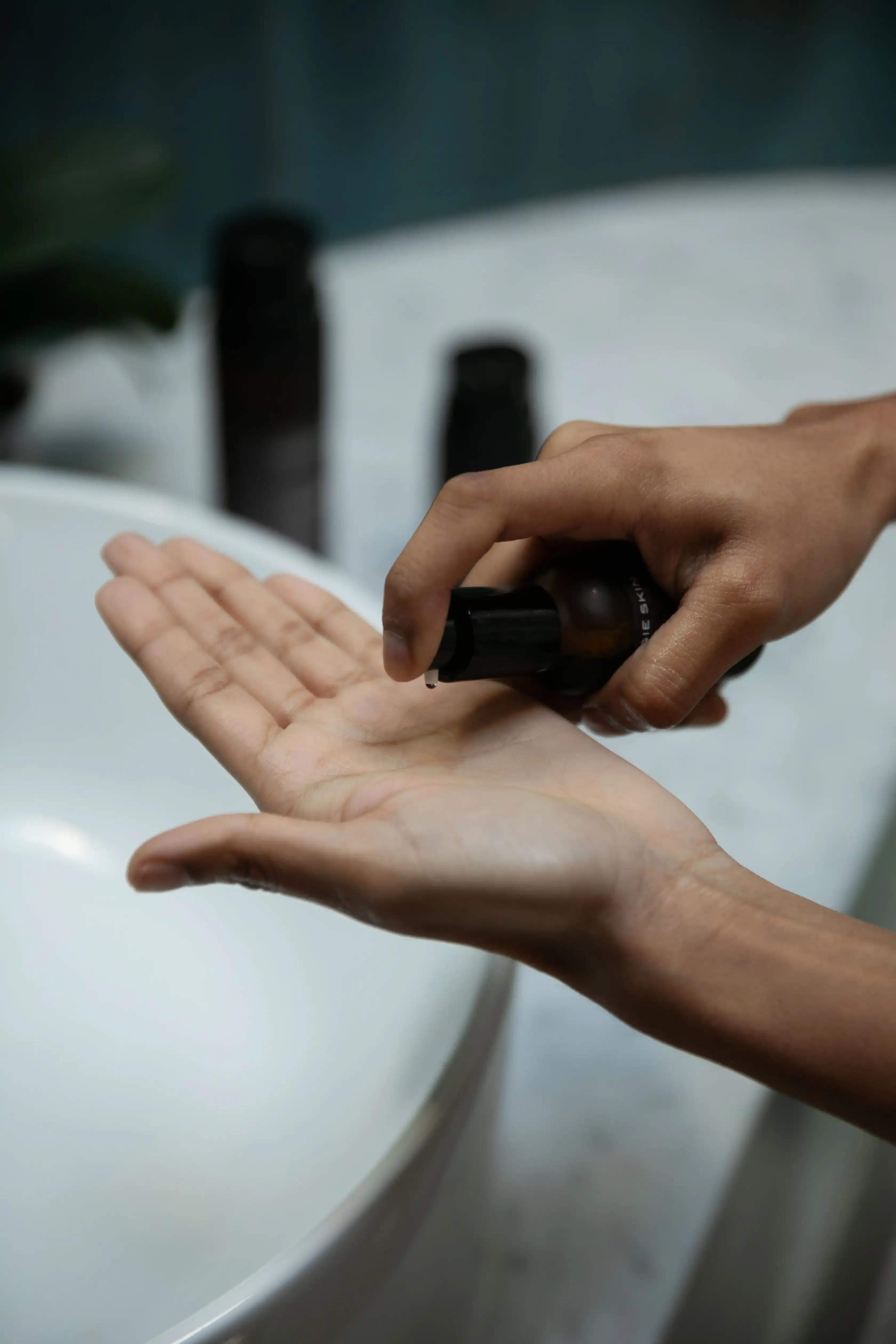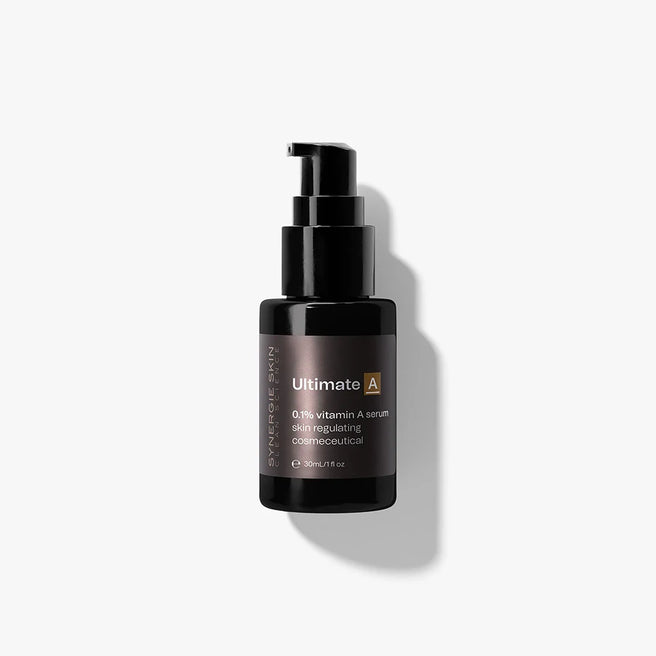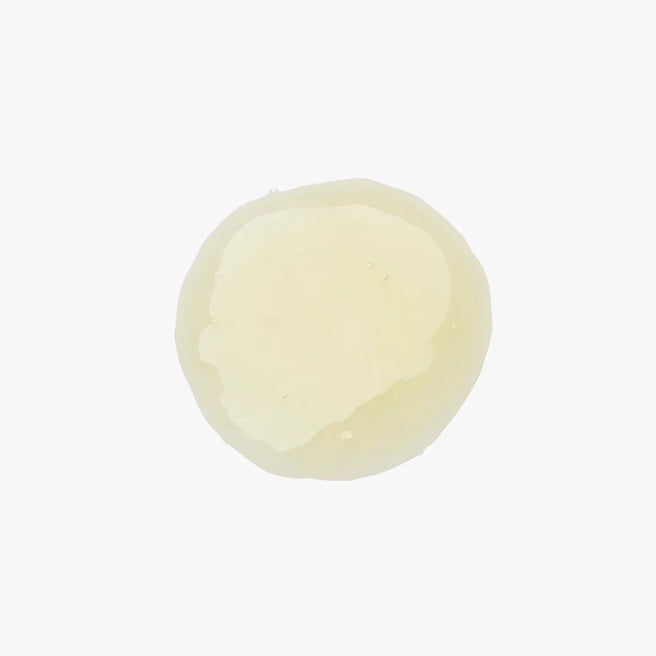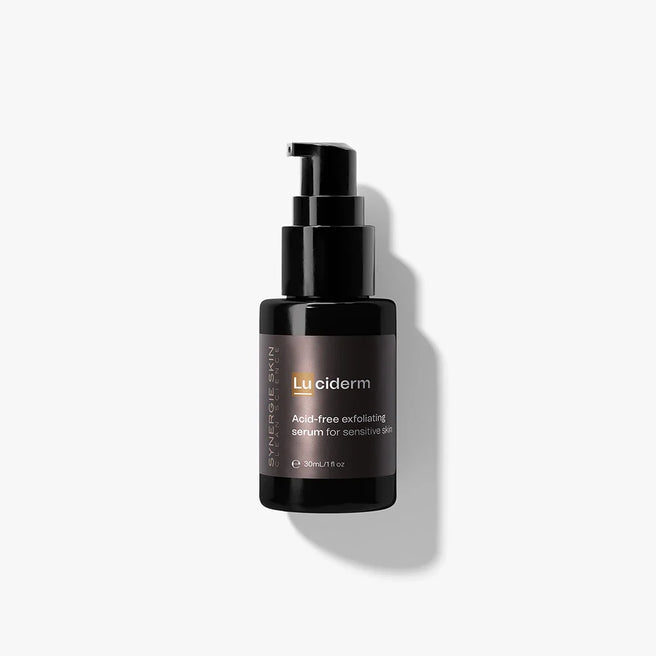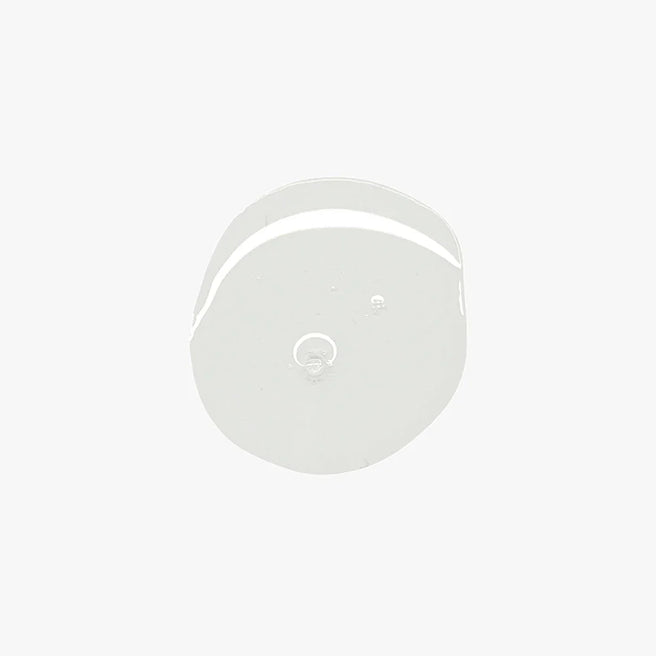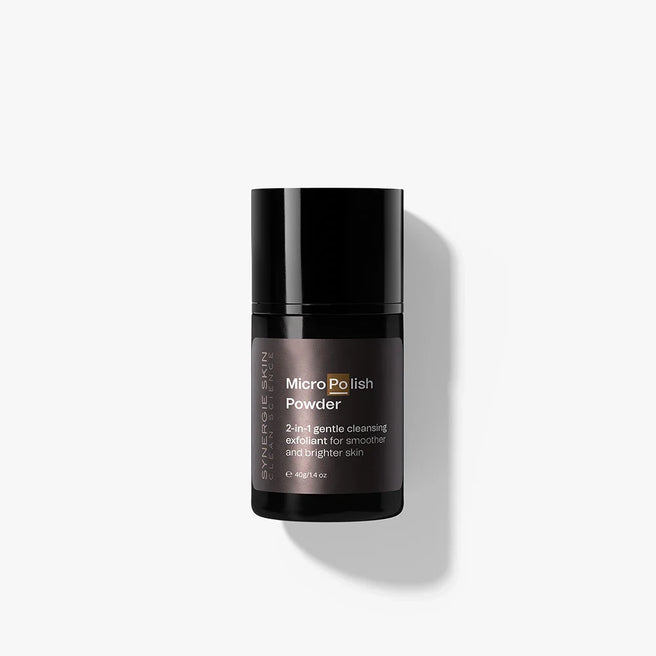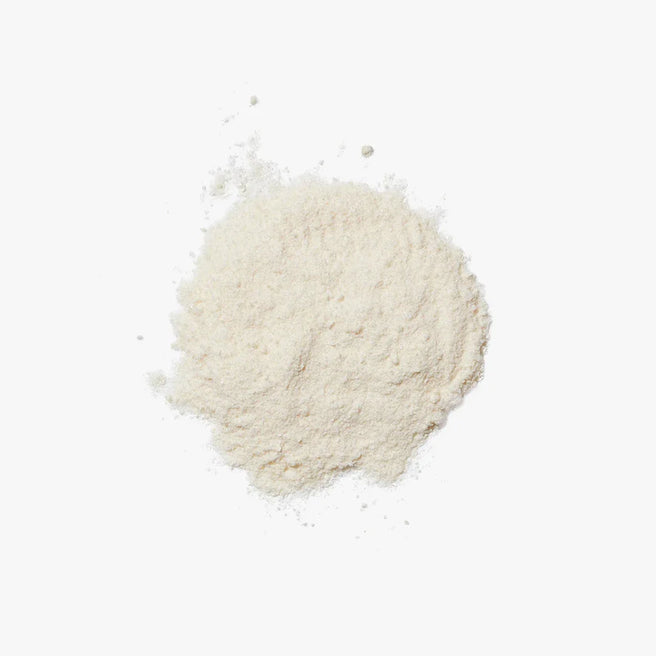Terri Vinson – skin scientist, author, and cosmetic chemist - breaks down the hype

Developed by dermatologist, Dr Whitney Bowe, the Skin Cycling method has existed for some years and has since become a viral beauty trend all over TikTok. Dr Bowe originally created the Skin Cycling method in response to a high volume of patients coming into her clinic with a mismatched array of self-prescribed skincare products and asking her to explain the order and frequency in which they should apply them on a weekly basis. Her strategic advice was to cycle - or stagger - the usage of active skincare products in order to achieve greater tolerance to active ingredients, and thus better results.
But is this method a catch-all for every skin type? Does every active ingredient really need to be cycled? Like all viral trends, it is often wise to take the hype with a pinch of salt and Skin Cycling is no different. While there are some products I advocate for cycling, there are many active skincare products that I firmly believe are daily essentials which would be completely illogical for anyone to omit from their nightly skincare routine.
So how does Skin Cycling work? When is it helpful? When is it not so helpful? Let’s find out!
What is Skin Cycling?
In a nutshell, Skin Cycling reorganises your skincare routine into a four-night rotation that alternates the usage of active and inactive ingredients. This approach is intended to minimise the risk of irritation by allowing the skin to have periods of rest and recovery which should, in theory, improve the overall efficacy of your evening routine.
How does Skin Cycling work?
Skin Cycling usually starts with an exfoliation night, followed by a retinoid night and, finally, two nights for recovery, before doing the whole thing over again. This skincare cycling routine is a 4-night cycle as follows:
Night 1: Exfoliation Night
This step is designed to give your skin an immediate glow whilst laying the foundation to get the most out of the following night’s routine (Night #2). During Night #1, you would use an exfoliating product to unclog your pores, remove dead skin cells sitting on the surface and brighten your skin overnight. Exfoliating can also send feedback messages to the deep dermal layers of the skin to produce collagen, creating a scaffold that helps reduce fine lines and wrinkles.
Night 2: Retinoid Night
The rationale behind this next step is that most skin types struggle to tolerate their retinoids every night, so the ‘skin cyclist’ advice is to introduce retinoids more successfully via the cycling routine. However, it is important to note here that the root cause for skin irritation is not always dependent on retinoids in and of themselves, as inflammation can also occur when users mistakenly layer their retinoids in conjunction with other reactive ingredients or use types of retinoids that are too strong for their skin type. I’ll cover this in more detail further on.
Night 3 & Night 4: Recovery Nights
These two nights are dedicated to recovery, nourishing the skin microbiome and repairing the barrier. The purpose behind this step is not to use any active products that would be seen to push the skin out of its comfort zone. After this, the user repeats the 4-night steps: Exfoliation Night, Retinoid Night, Recover, Recover.
Terri’s Take: Not a Catch-All
Alright, so what should we make of this advice? Overall, I believe this method to be very generalised advice and not necessarily appropriate for well-educated skincare users. While the core intention behind Skin Cycling seems reasonable enough (particularly surrounding the importance of nourishing and supporting the skin barrier), I personally feel that there isn’t enough scientific nuance underpinning this trend in its current form – possibly due to the dilution/oversimplification of information that inevitably happens on social media. Here are my specific reservations:
First of all, when we think about ‘skin recovery’ it is easy to fall into the trap of forming an analogy between a skincare routine and a body workout routine. Instead, we must recognise that using active skincare is not at all the same as putting your muscles through a workout at the gym because not all active skincare is applying stress to the skin barrier. Thus, not all active skincare requires any kind of recovery period whatsoever. In fact, there are many ingredients that your skin will greatly benefit from receiving each and every day (more on this later).
Secondly, a Skin Cycling routine is not a ‘one size fits all’ model for all skincare routines. When Synergie Skin prescribes a routine via our Skin Quiz and consultations, we are already taking into account which products should be used in the morning and evening, and precisely how often. As a result, the choice to abstain from using beneficial active cosmetics from your routine every four days can be quite often redundant and even counterproductive to your personal skin goals.
Thirdly, when it comes to retinoids and other essential actives like vitamin C, prebiotics, postbiotics, and vitamin B3, it is scientifically verified that the majority of skin improvements come from the daily use of these products, as long as the skin barrier is healthy and strong to begin with.
Of course, skin sensitivity and tolerance should always be taken into account when devising a healthy skincare routine. It is vital to select the correct retinoid serum, exfoliation products, and barrier-repairing products based on your skin’s individual needs and concerns. There are many resources that can assist you in forming the perfect skincare routine without needing to resort to Skin Cycling, which leads me to my next point:
How to nail your routine without Skin Cycling
If you buy skincare products based solely on trends, you will inevitably be confused by how to slot each product into your day and night routine. Synergie Skin (and other skincare professionals) are very clear on what products should be used morning and night, and how often they should be used on the skin.
I would therefore highly recommend seeking a professional consultation or a virtual consultation to eliminate any possible confusion and streamline your skincare routine so that it is tailored specifically to your skin type and personal goals. This is by far the best path forward to achieving potent results. From this vantage point, there is consequently no need for the Skin Cycling method of application, which will only serve to lessen the potency of your bespoke routine.
Once you have been prescribed the right skincare products that are appropriate to your skin type, I would then advise this daily schedule for application:
Morning:
1. Cleanse
2. Balance (light, water-based essences; balancers)
3. Serums (this includes vitamin C serums and exfoliants*. I always recommend applying from thinnest to thickest in consistency)
4. Eye care
5. Day Moisturiser or face oil
6. Solar protection
* Exfoliants should be used in the morning 2-3 times weekly for most skin types. Those with a robust skin barrier who are experiencing moderate-to-severe acne or sun damage may be able to use acidic exfoliants daily until the condition resolves, provided the skin can tolerate the acidic formulation. The recommendation of using exfoliants only at night is a myth. You can exfoliate in the morning provided you always sun protect during the day.
Evening:
1. Cleanse
2. Balance (light, water-based essences; balancers)
3. Serums (this includes your vitamin A/retinoid and B3/niacinamide serums. Again, apply from thinnest to thickest in consistency)
4. Eyecare
5. Evening Moisturiser or face oil
Weekly:
Face masks and other treatment products
So is Skin Cycling helpful at all?
In some cases, yes. When it comes to prescription retinoids, I absolutely advocate for Skin Cycling. Retinoic acid can be a very aggressive active ingredient and can have a negative impact on the skin barrier for many skin types if used every single night. However, retinoids are not all created equal. Prescription retinoic acid is only one part of a greater retinoid family with derivatives such as retinol, retinyl palmitate, retinaldehyde and hydroxypinacolone retinoate (HPR) impacting the skin in a range of different ways. Essentially, retinoids exist on a spectrum and this spectrum seems to be mostly ignored when it comes to Skin Cycling advice.
The information that is broadly available on TikTok quite often only discusses retinol and rarely makes any mention of other retinoids. Another frequent omission is that the dosage of the different retinoids is rarely discussed, which is a major factor in prescribing a skincare routine for anyone. Some retinoids (such as non-encapsulated raw retinol and prescription retinoic acid) are much more aggressive and may need to be cycled, whereas other retinoids (such as lower-dose encapsulated retinol and hydroxypinacolone retinoate) are well tolerated by most skin types and can be used daily with minimal risk. Hopefully it goes without saying that skin tolerance can vary significantly between individuals!
Most doctors and dermatologists would therefore recommend using prescription retinoids every third or fourth day and even mixing with a gentle moisturiser of choice, then working up to daily use over three-to-six months to build tolerance. This closely links to another viral phenomenon called ‘retinol sandwiching’ which involves applying a layer of moisturiser before and after the application of a retinoid and aims to reduce the unpleasant side effects of retinol (redness, peeling, sensitised and flaky skin).
While prescription retinoids may be necessary for some skin types, my personal preference is to commence your retinoid journey with gentle forms of this active ingredient, preferably in the form of liposomal encapsulated retinol which does not interfere with the skin barrier. Synergie Skin Ultimate A serum, for example, is an entry level retinol that can be used every night and does not need to be cycled as it is so gentle.
Exfoliating with low-pH acidic products such as AHA/ BHA serums may cause irritation and barrier damage if used daily. Acidic exfoliants, therefore, should be cycled for most skin types and should only be used 2-3 times weekly (and not mixed with retinol in the evening). Those with a robust skin barrier who are experiencing moderate-to-severe acne or sun damage may be able to use acidic exfoliants daily until the condition resolves, provided the skin can tolerate the acidic formulation.
Acidic exfoliants are harsh because they are designed to remove the top layer of the skin. The pH must be low enough (around pH 3) for the acid to be effective, which is much lower than the skin pH (sitting at around 5.6). Ideally, we want to keep the top layer of the skin in balance and not strip off layers too aggressively, so it is advised to only use it roughly every 2-3 days, whilst consistently monitoring for redness or irritation as this is the key sign that the barrier has been impaired.
When is Skin Cycling NOT helpful?
You should never Skin Cycle any essential active ingredients that will strengthen the skin barrier. This includes niacinamide (vitamin B3), non-acidic forms of vitamin C, and prebiotic and postbiotic skincare. These products are extremely gentle on all skin types and are essential in addressing almost every skin concern, as well as preserving the skin’s longevity. Put simply, to cycle these products would be to reduce the overall efficacy of your skincare routine.
I mention non-acidic vitamin C in the above list because not every skin type can tolerate vitamin C in its other forms. Vitamin C in the form of L-ascorbic acid is highly acidic when used at the correct dosage and pH, but it is also the format that is most effective on the skin. If you have sensitive skin, but you are determined to tolerate pure L-ascorbic acid, then you might consider working up to this highly potent active ingredient via Skin Cycling.
I should also mention that any product in your skincare cabinet that doesn’t apply any further stress to your skin barrier needn’t be cycled. For example, consider a scenario where you have sensitive skin, and for this reason you have been prescribed a moisturiser that has been formulated specifically for sensitive skin types. It therefore makes zero sense to cycle such a product. Why would you cycle something that helps your condition on a day-to-day basis? In this case, you should absolutely be using this moisturiser every single day.
Non-acidic exfoliants such as enzyme and peptide exfoliants, or micro-fine gentle scrub cleansers (such as Luciderm or MicroPolish powder), also do not need to be cycled and can be used daily if needed as these ingredients present minimal risk to causing barrier damage and skin irritation.
Is Skin Cycling effective for all skin types?
Sensitive skin types should most definitely be vigilant when it comes to which ingredients they can tolerate and at what dosage. But the rule of thumb is:
Skin Cycling is useful only to prevent barrier damage.
So, for the most part, I would say that Skin Cycling is appropriate for someone who doesn't know where to begin with their skincare or if they are completely new to active skincare and are seeking a gentle introduction. But if your current routine is well-researched, agrees with your skin, and does not apply stress to the barrier, then you do not need to be concerned with Skin Cycling.





